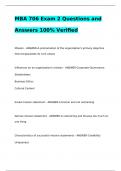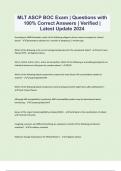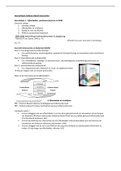ENVIRONMENTAL PSYCHOLOGY
0HM260 - M1Q3 2022-2023
1. THE FUNDAMENTALS OF ENVIRONMENTAL PSYCHOLOGY
HISTORICAL TIMELINE: THE ORIGINS OF ENVIRONMENTAL PSYCHOLOGY
Environmental psychology draws from psychology and the built environment. Early empirical
psychological studies in the laboratory by the structuralists Wundt and Titchener used introspection
to identify the building blocks of the mind. Later, behaviorism emerged led by Watson, Pavlov, and
Skinner, focusing on observable behavior, but neglecting non-observable behavior. Gestalt
psychologist like Wertheimer, Koffka, and Köhler challenged this approach, arguing that the whole is
other than the sum of its parts and thus that behavior is influenced by both the person and the
environment. Personality psychology, based on traits, also emerged during this time, with Allport
proposing that personality alone is enough to predict behavior.
Kurt Lewin applied Gestalt psychology to form the concrete basis of environmental psychology,
called field theory. He observed different people display similar behavior in the same environment,
while one person can act differently in different environments. Lewin’s life space defined the totality
of psychological forces, both external and internal, that affect an individual’s behavior, which
changes over time as people mature. This mathematical vector-like approach resulted in the
formula 𝑩 = 𝑭(𝑷, 𝑬), which states that behavior (B) is a function of the individual (P) and their
psychological environment (E). Besides that, he believed strongly that applied research could
provide the answer to fundamental questions, called action research.
Roger Barker was critical to lab experiments in the sense that they do not always represent reality
due to interference with the participants ecological environment (EE). His view coincided with the
view of Lewin in the role of the environment but criticized the life space in that is not independent of
the individual. In his behavior setting theory, Barker therefore focused on the role of the
environment, completely independent of the individual.
The functionalist approach of Brunswik also emphasizes the role of the ecological environment on
an individual’s behavior. The mind developed in our ecological environment and can thus not be
understood without considering the EE. Brunswik developed his own model on this regard, the lens
model.
HUMAN-ENVIRONMENT INTERRELATIONSHIPS
Coming back to Lewin’s formula, the function (the person-environment) can be explained with a
multitude of different worldviews: (1) personism, (2) situationism, (3) interactionist, (4) organismic,
and (5) transactional.
The first two, worldviews describe one element that determines the individual’s behavior. For
personism this is the personality traits of the individual, while for situationism it’s the consequences
in the environment. Interactionists see the person and the environment as two different entities that
both influence a person’s behavior, and which might also interact. The organismic worldview is a
systemic perspective that treats the person and the environment as separate entities, but also as a
system that is other than the sum of its parts. This thus focuses on the relationship within the entire
system, rather than the characteristics of the separate entities. In the transactional view, time is
included as an inseparable part of the holistic unity.
,Table 1. Visualizations of different worldviews.
Personism Situationism Interactionist Organismic Transactional
It is true that the environment indeed influences the person, as described in interactionist views, but
human behavior also alters the environment to meet our demands (escalator case). These
alterations then again facilitate certain behavior, which relates to the notion of affordances. To
summarize the holistic view on the environment: the (molar) environment is other than the sum of
its (molecular) parts.
DEFINITION, CHARACTERISTICS, AND RESEARCH METHODS
It is hard to define environmental psychology because of its interdisciplinary nature and its
constantly changing focus. Tony Cassidy describes it as the interplay between people and their
physical and social environments, with the focus on understanding the role the environment has in
shaping behavior. Environmental psychologists tend to focus on the problems that are important in
the world (now: climate change), which obviously changes a lot over time.
Research in environmental psychology is often conducted in the field but might also happen in the
lab. Most theories on human-environment interrelationships are based on applied research, rather
than fundamental research.
2. ECOLOGICAL VALIDITY
Wicker criticized lab studies, just like Barker, because the methods show how people could behave
rather than how people actually did behave when they are not constraint by the research setting. In
line with this is Brunswik who also states that experiments can have low ecological validity: finding
the bearded ladies.
Ecological validity is more than just doing research in the field that is the natural setting. The
person-independent environmental characteristics of the ecological environment are important to
understand if we want to understand how people behave in it. All aspects of a study design should
be representative to the situation in a participant’s daily life.
This introduces the problem with factorial design studies: the researcher is forced to include scenes
that are highly uncommon in the ecological environment (the bearded ladies). Therefore, both field
and lab studies are necessary.
BARKER’S ECOLOGICAL PSYCHOLOGY: THE BEHAVIOUR SETTING THEORY
REFINE WITH ANTAL’S FEEDBACK!
Barker's theory highlights the significance of context by positing the behaviour setting as a function
of three fundamental elements: the physical environment, available objects and tools, and
individuals present. This implies that every behaviour setting has its own distinctive set of
characteristics that influence the behaviour of the individuals occupying it. This perspective
diverges from the notion that behaviour is solely a result of internal psychological processes, by
acknowledging the effect of environmental factors on behaviour. The theory further seems to
, emphasize that the specific characteristics of individuals do not define a behaviour setting, as
occupants of the setting assume distinct roles that correspond to specific behaviours. Hence, the
identity of the individuals occupying those roles is of little relevance as long as these roles are
embodied in some manner.
For instance, consider a classroom setting - which can be viewed as a behaviour setting according
to this interpretation of Barker’s theory - wherein the physical and social attributes of the classroom
can significantly shape the behaviour of both students and teachers. The arrangement of the room,
the furniture used, and the availability of technology could then all influence how students learn and
interact with each other, and how teachers deliver their lessons. Nevertheless, the personalities and
characteristics of individual teachers or students would not affect their behaviour within the setting,
as it is shaped by the physical environment and the roles of the people within it.
Employing this perception of Barker's theory, it is primarily applicable to specific and well-defined
environments, where the purpose of the environment is limited to a particular set of activities, and
where there are distinct roles and characteristics required to qualify as a behavioural setting.
3. THE PERSON AND THE ENVIRONMENT
OUR PLACE IN THE NATURAL ENVIRONMENT
HUMAN- AND NATURE CENTEREDNESS
The human species has evolved and survived to its current form through natural selection. A key
aspect of this survival is that humans altered their environment to their needs. This homocentric
view where nature was seen as a sole utility for the human species quickly leads to exploitation. As
a reaction, a modern view is that humans need to save resources for future generations
(recourcism) and that the environment should be saved because we depend on it for our survival
(conservation).
The terms used to describe nature as having values in the absence of humans are ecocentrism,
biocentrism, and deep ecology. A step further to this is egalitarianism, where animals and plants
are equal to humans. Instead of conservation, this view advocates preservation: protection of the
environment for its intrinsic value.
PLACE PREFERENCE
From an evolutionary perspective, people prefer environments that are survivable. They therefore
prefer environments that offer prospect and refuge (Appleton’s prospect-refuge theory). This might
come from the fact that information in these environments is easily extracted, making them easy to
predict (Kaplan & Kaplan’s information processing theory). Being in nature is proven to have
health/healing benefits. The biophilia hypothesis is an explanation for this: we have an
innate/evolved need for contact with nature.
PLACE ATTACHMENT AND SENSE OF COMMUNITY
The concept of “place” includes a highly person-dependent aspects and emphasizes the meaning
of an environment to the individual and how they are experienced. Just like a “residence” is not
necessarily a “home”, place includes some emotional attachment. The concept of home entails
connectedness to the people, the past and the future, and includes identity.
Place attachment is the bond between an individual and a specific place and/or the people living
there. Raymond et al. (2010) have defined 4 sub-dimensions of person-place connections: (1) place
identity, (2) place dependence, (3) social bonding, and (4) nature bonding.











